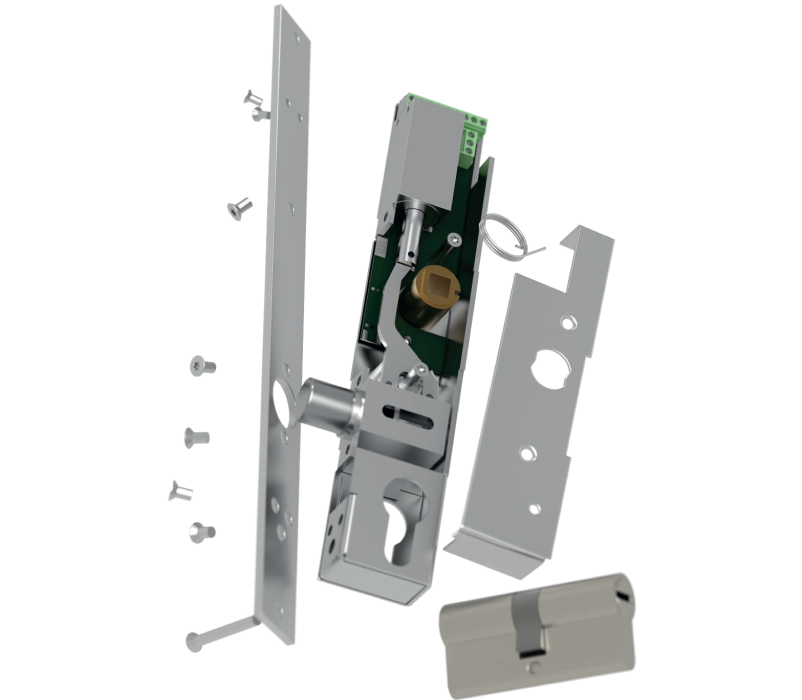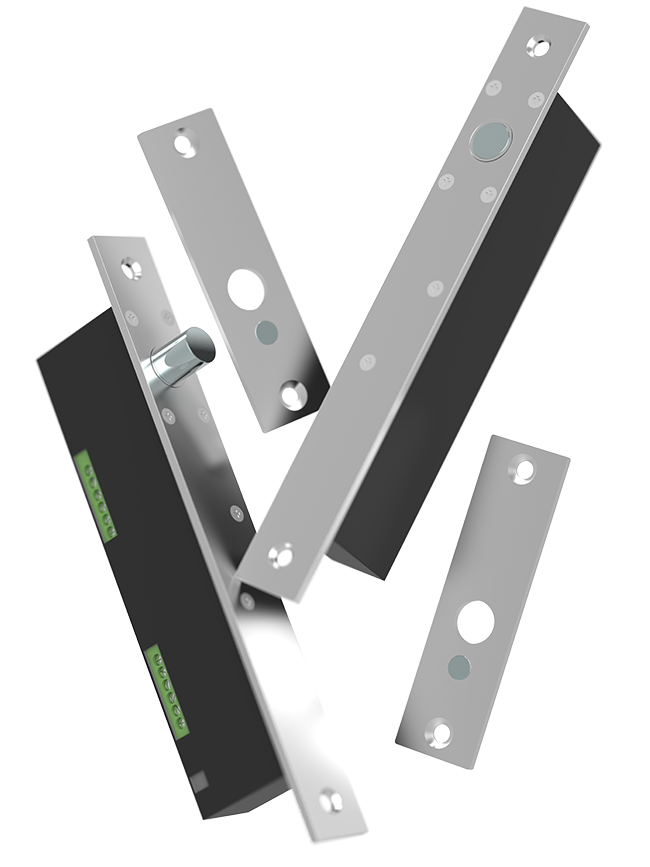
Manually operated locks do not require any electrical components for their operation. They are locks that are frequently used mainly on interior doors and do not need to offer high security unless they are used for very special applications.
The operation requires a handle or cylinder for opening and locking. In some cases, such as latches, they also incorporate the possibility of blocking the slide from the inside by means of a spring.

















